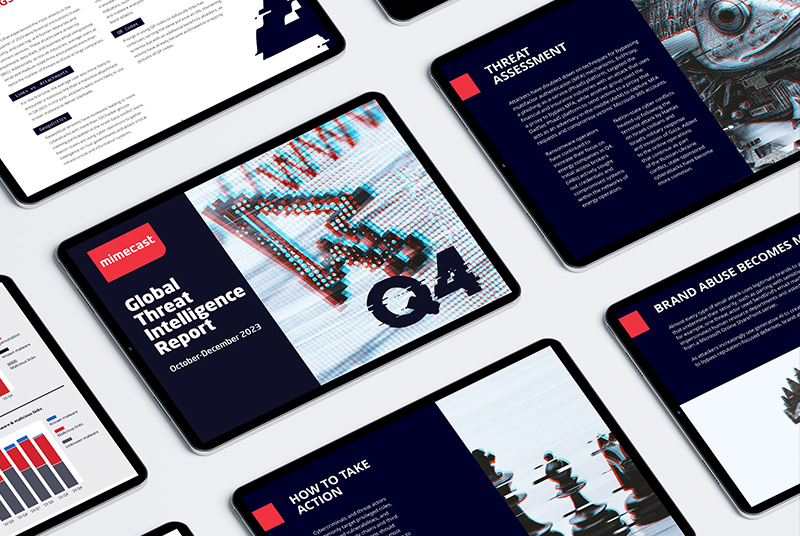Cloud Security Posture Management (CSPM) Introduction
With ever-increasing amounts of data stored and retrieved from cloud-based systems, cybersecurity professionals are constantly on the lookout for vulnerabilities and misconfigurations that may lead to data breaches. Cloud security posture management (CSPM) is a collection of processes that allows organizations to do this effectively and efficiently, both identifying and remediating risk in a range of environments.
Using CSPM, organizations can assess, monitor, and improve their overall security posture in the cloud. CSPM tools and services automatically scan cloud infrastructure and resources, identify potential vulnerabilities and misconfigurations, and provide recommendations for remediation. CSPM can also help organizations ensure compliance with security regulations, protect against threats, and improve overall security visibility and control in the cloud.
CSPM security is also flexible, working across diverse cloud-based systems such as:
- IaaS (Infrastructure as a Service)
- Saas (Software as a Service)
- PaaS (Platform as a Service)
But what is CSPM, and how does it work to protect your organization? Here, we look at the benefits of CSPM tools and how your organization can choose the right solutions for your business.

How Does Cloud Security Posture Management Work?
Cloud Security Posture Management continually assesses cloud infrastructure and applications in order to identify any potential risks or vulnerabilities by periodically scanning and assessing the cloud environment. It looks for misconfigurations, missing security patches, insecure access protocols, and anything else that could potentially lead to a breach.
Using data collected from these assessments, CPSM can generate reports on the security posture of your cloud environment so you can gain insight into where improvements need to be made. With this information at hand, it becomes easier to proactively address any issues before they become serious problems down the line.
Simply put, Cloud Security Posture Management is an essential tool for ensuring both the safety and reliability of your cloud-based systems.
Benefits of CSPM
CSPM tools typically provide a centralized view of an organization's cloud environment, and can scan for misconfigurations, identify vulnerabilities, and monitor for suspicious activity. They can also provide automated remediation, such as automatically applying security patches, adjusting access controls, and disabling unnecessary services.
This means a host of benefits for organizations, including:
- Improved security visibility: CSPM provides a centralized view of an organization's cloud environment, which makes it easier to identify and assess security risks. This can help organizations to quickly identify and respond to security incidents.
- Automated remediation: CSPM tools can automate the process of identifying and remediating security risks, such as applying security patches, adjusting access controls, and disabling unnecessary services. This can save organizations time and resources.
- Compliance: CSPM can help organizations ensure compliance with security regulations and industry standards, such as PCI-DSS, HIPAA, and SOC2. This can reduce the risk of regulatory fines and reputational damage.
- Improved security posture: CSPM can help organizations improve their overall security posture by identifying and addressing vulnerabilities and misconfigurations in a timely manner.
- Cost-effective: CSPM can be more cost-effective than manual security assessments. By automating security scans and assessments, CSPM reduces the need for manual labor, which can save organizations money.
- Continuous monitoring: CSPM provides continuous monitoring, enabling organizations to detect any security issues as soon as they arise and take necessary actions to mitigate them.
Types of CSPM Tools and Solutions
CSPM tools and solutions are widely available in a range of configurations, focusing on different areas of cloud security or providing comprehensive out-of-the-box solutions. Today, the tools and solutions listed below are the most common types:
- Cloud Security Management Platforms: These comprehensive solutions provide a centralized view of an organization's cloud environment. They typically include a range of features such as vulnerability scanning, compliance reporting, and automated remediation.
- Cloud Infrastructure Security Scanners: These tools scan an organization's cloud infrastructure for vulnerabilities and misconfigurations. They typically provide automated remediation and compliance reporting.
- Cloud Identity and Access Management (IAM) Solutions: These solutions help organizations manage and secure user identities and access controls in the cloud. They can be used to automatically assign roles and permissions, and to monitor and control access to cloud resources.
- Cloud Workload Protection Platforms (CWPP): These CSPM solutions focus on protecting workloads running on cloud infrastructure. They typically include features such as runtime protection, threat detection, and incident response.
- Cloud Security Information and Event Management (SIEM) Solutions: Cloud SIEM solutions provide real-time visibility into cloud-based security events and can be used to detect and respond to security incidents.
- Cloud Security Configuration Management Tools: These CSPM tools help to automate the process of managing and maintaining security settings and configurations for cloud infrastructure and services.
How to Choose the Right CSPM tool or Solution for Your Business
Choosing the right Cloud Security Posture Management (CSPM) tool or solution for your business can be a complex task, but there are several factors to consider when making your decision:
- Compatibility: It's important to choose a CSPM tool or solution that is compatible with the cloud platforms and services that you are currently using. Consider the cloud providers you're using and look for a tool that is specific to that provider or is compatible with it.
- Features: Consider the specific security and compliance needs of your business and look for a CSPM tool or solution that offers the features that are most important to you. Some examples of features that may be important include vulnerability scanning, automated remediation, compliance reporting, and incident response.
- Scalability: As your business grows, so will your cloud environment. Choose a CSPM tool or solution that can scale to meet the changing needs of your business.
- Integration: Consider whether the CSPM tool or solution can be integrated with other security tools and solutions you are currently using. This will allow you to manage all your security tools from a single interface.
- Ease of Use: Look for a CSPM tool or solution that is easy to use and understand. This will make it easier for your team to use the tool effectively and to quickly identify and address security risks.
- Cost: Consider the cost of the CSPM tool or solution and weigh it against the benefits it will provide for your business. Make sure you get a clear understanding of the pricing model and the cost of any add-ons or additional services you may need.
- Vendor support: Look for a vendor that has a good reputation for providing excellent support and is responsive to customer needs. It is important to have a vendor that can help troubleshoot and provide assistance when needed.
How to Implement Cloud Security Posture Management
Implementing CPSM solutions can be a complex task, but there are steps organizations can take to ensure their cloud systems are secure and compliant.
The first step to implementing CPSM is to assess the current state of your cloud environment. This includes identifying what resources you have, where they are deployed, who has access to them, and whether those resources are compliant with any applicable regulations or standards. A comprehensive assessment will also include analyzing your security policies and procedures for vulnerabilities or opportunities for improvement.
Once the initial assessment is complete, it’s time to start implementing CPSM solutions. This includes setting up and configuring cloud access control policies, security frameworks and tools, identity management systems, and logging and monitoring systems. Organizations should also consider using third-party providers or services such as a “Security Operations Center[SP1] ” (SOC) to help monitor their environment for potential threats or malicious activity.
Finally, organizations should regularly review their cloud security posture to ensure that it meets the changing needs of their business. This includes performing regular assessments of your resources, policies, procedures, and compliance standards. Regular reviews can also uncover any weaknesses in your cloud security posture which can then be addressed before an incident occurs.
By taking these steps to implement CPSM, organizations can ensure that their cloud environments are secure, compliant, and functioning optimally. Implementing CPSM solutions is an iterative process that requires ongoing monitoring and maintenance, but it’s a necessary part of any cloud-based system.
The Future of Cloud Security Posture Management
Cloud-based infrastructures, software, and data management are certain to grow over the next few decades, particularly as the Internet expands and speeds increase. The future of CSPM then looks bright, with many advances already making an impact and others on the cusp of being widely implemented.
Advances in areas such as automation, machine learning, and artificial intelligence will bring extensive coverage of larger data sets and more complex programs, helping to speed up risk identification and ramification. Machine learning and AI, in particular, will also be able to predict potential vulnerabilities and threats before they become larger issues.
CSPM and Mimecast
Through AI and machine learning, Mimecast is already ushering in a bright future for CSPM tools and solutions, helping organizations improve compliance & supervision within cloud-based email systems. Mimecast’s Supervision solution allows systematic reviewing by compliance personnel that allows you to confidently meet regulatory requirements and achieve greater insights with extensive reporting systems.
Added to this, our E-Discovery and Compliance solutions provide streamlined event discovery thanks to a unified solution designed to reduce costs and enable intuitive legal response systems that are both effective and reliable. Through extensive visibility and control built on Mimecast’s Cloud Archive, organizations can benefit from a best-in-class, easy-to-operate cloud solution for compliance, data management, and continuity.
Final Words: Cloud Security Posture Management
It’s clear that the right CSPM tools and solutions can help organizations improve their overall security posture, ensure compliance with security regulations and industry standards, and protect against threats. However, choosing the right tools that most benefit your needs can be challenging.
While cost-effective and usually easy to integrate with other security tools and solutions, your organization must consider factors such as compatibility, features, scalability, ease of use, cost, and vendor support, as well as how your chosen solution approaches advances in areas such as automation, machine learning, and artificial intelligence.
For more information on Mimecast’s CSPM solutions, contact us today to discuss your specific requirements. Additionally, explore our blog for more insights into today’s cybersecurity landscape.



